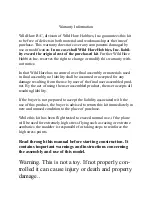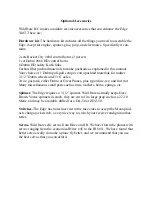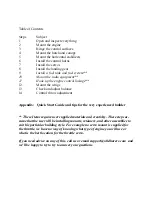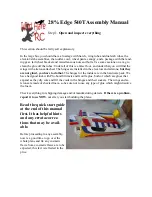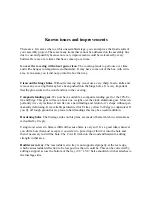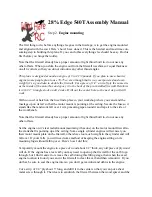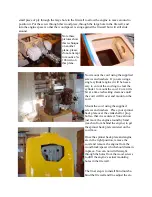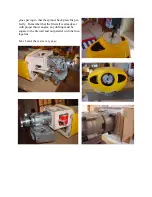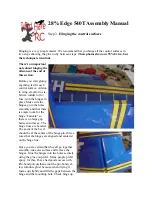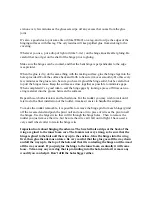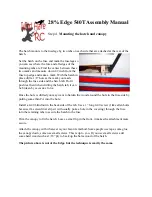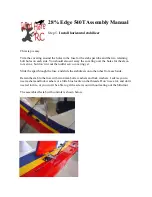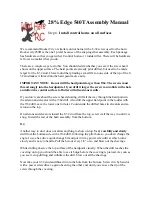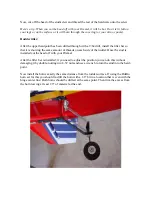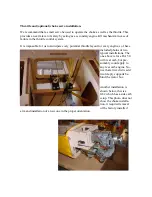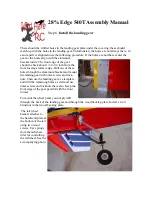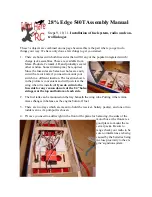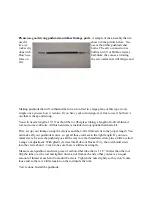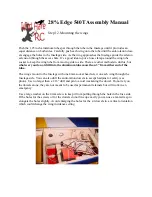
Known issues and improvements
There are a few areas where, at this unassembled stage, you can improve the final results of
your assembly project. There are many items that cannot be addressed on the assembly line
due to cost and possibly because not every improvement would be welcomed by every
builder. Here are a few items that have come up over time.
Go over the covering with a heat gun or iron
. The covering tends to get loose over time
and with changes in temperature and humidity. It may have come out of the box with wrin-
kles, I can assure you it did not go into the box that way.
Clean out the hinge holes.
Without removing any wood, use a very sharp X-acto knife and
remove any covering that may have been pushed into the hinge holes. It is very important
that the glue sticks to the wood and not to the covering.
Composite landing gear.
We now have available a composite landing gear for the 28% Ex-
tra and Edge. This gear will save about 4 oz. weight over the stock aluminum gear. More im-
portantly it is very resilient. It can flex on a hard landing and return to it’s shape without per-
manently deforming. It is available painted (red for Extras, yellow for Edge) or unpainted. If
you fly off rough ground or are prone to hard landings this may be a useful addition.
Hardening holes.
The fuselage sides on this plane are made of balsa which in certain areas
is doubled by lite ply.
Using wood screws in balsa is difficult because balsa is very soft. It’s a good idea whenever
you drill a hole that must accept a wood screw to put a drop of thin CA into the hole and
then if necessary re-drill the hole. The CA will wick into the wood and harden it, adding
strength in that area.
Rudder servo tray.
The rear rudder servo tray is not supported properly at the rear edge,
which causes rudder deflection to be less positive than it could be. This can be corrected by
adding a support across the bottom of the tray (1/8” x 3/4” balsa should do it) that attaches to
the fuselage sides.


